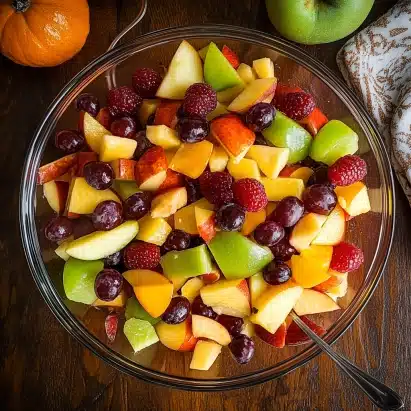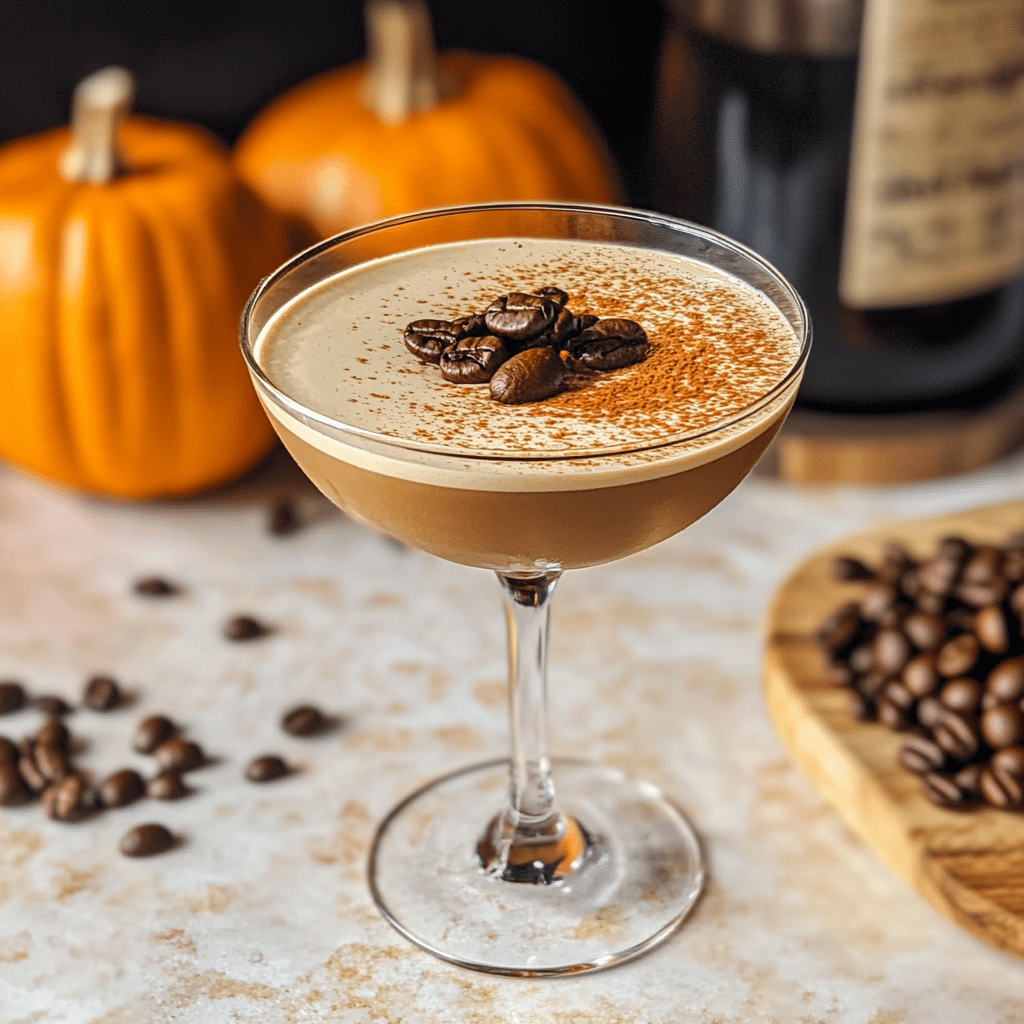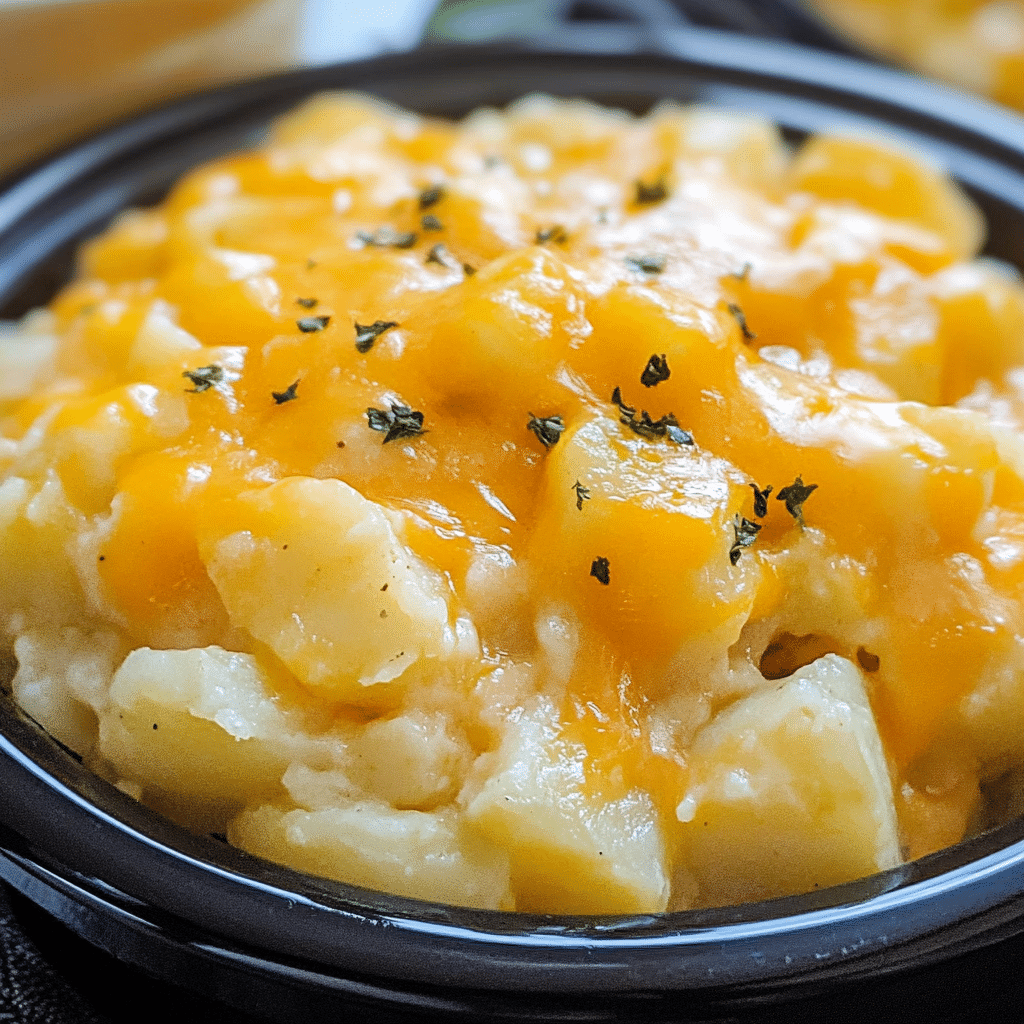Sometimes the most impressive dishes are also the simplest, and whole roasted cauliflower is the perfect example.
Instead of chopping it into florets, you roast the entire head until it’s tender all the way through, golden on the outside, and infused with garlic and spice. Once it comes out of the oven, you drench it in a rich, silky butter sauce that sinks into every little crevice.
The result is a centerpiece that looks like it came straight from a restaurant kitchen—but the ingredient list is short, and the method is straightforward. The outside becomes beautifully browned and slightly crisp, while the inside turns soft, delicate, and almost creamy. It’s hearty enough to serve as a vegetarian main dish, yet simple enough to act as a special side for roast chicken, steak, or fish.
What makes this whole roasted cauliflower special is the balance of textures and flavors. Olive oil, salt, pepper, and garlic powder lay down a savory, aromatic base. The oven does most of the work, transforming a humble vegetable into something golden and fragrant. Then the butter sauce steps in with richness, a touch of brightness from lemon, and a hint of herbs. Every slice brings together tender cauliflower, nutty roasted notes, and glossy, garlicky butter.
It’s the kind of recipe you can lean on when you want something a little dramatic—something you can bring to the table whole and carve like a roast—but don’t want to fuss with complicated techniques. Once you try it, whole roasted cauliflower might become your new favorite way to serve this versatile vegetable.
Core Ingredients for Making the Recipe
To prepare this Whole Roasted Cauliflower with Butter Sauce, you need just a handful of pantry ingredients plus a fresh head of cauliflower. The base is extremely simple; the magic comes from roasting and a rich finishing sauce.
For the Roasted Cauliflower
- 1 medium head of cauliflower (about 2 to 3 pounds)
- 3 tablespoons olive oil
- 1 teaspoon salt
- 1/2 teaspoon black pepper
- 1 teaspoon garlic powder
These ingredients create a flavorful coating that helps the cauliflower brown and season it all the way through.
For the Butter Sauce
You can keep the sauce minimal—just butter and seasoning—or build in layers of flavor. This version is rich, garlicky, and lightly tangy.
- 6 tablespoons unsalted butter
- 2 cloves garlic, finely minced (or 1/2 teaspoon garlic powder if you prefer)
- 1 tablespoon lemon juice (freshly squeezed, if possible)
- 1/2 teaspoon Dijon mustard (optional, for a gentle tang and depth)
- 1/4 teaspoon smoked paprika or sweet paprika
- 1/4 teaspoon salt, or to taste
- Freshly ground black pepper, to taste
- 2 tablespoons chopped fresh parsley (or cilantro, chives, or a mix)
Optional Garnishes
- Extra chopped fresh herbs
- Grated Parmesan or Pecorino cheese
- Toasted almond slices, pine nuts, or pistachios
- Lemon zest or thin lemon wedges
These finishing touches are optional but can add color, freshness, and texture to the final dish.
Step-by-Step
Guide to Making the Recipe
The process for whole roasted cauliflower is essentially three stages: prepping and seasoning the cauliflower, roasting it until tender, and finishing with a silky butter sauce. Each step builds flavor and texture without adding much complexity.
1. Prepare the Cauliflower
- Preheat the oven
- Set your oven to 400°F (200°C).
- Line a baking sheet or use an oven-safe skillet or shallow Dutch oven.
- Trim the cauliflower
- Remove any loose or tough outer leaves from the cauliflower.
- Trim the stem just enough so the cauliflower can sit flat, but keep the core intact so the head stays together.
- Rinse the cauliflower under cold water and pat it dry thoroughly with a clean towel. Moisture on the surface can prevent browning.
- Season the cauliflower
- In a small bowl, whisk together the 3 tablespoons olive oil, 1 teaspoon salt, 1/2 teaspoon black pepper, and 1 teaspoon garlic powder.
- Place the cauliflower head, stem side down, on your prepared pan.
- Brush or rub the seasoned oil mixture all over the surface, making sure to get into the crevices as much as possible. If any oil drips onto the pan, you can scoop it back up and brush it over the cauliflower again.
This simple seasoning creates a flavorful crust and helps the cauliflower develop a beautiful, golden exterior.
2. Roast the Whole Cauliflower
- Cover for initial roasting
- For the first part of roasting, you want to trap some steam so the inside cooks all the way through.
- Loosely tent the cauliflower with foil, or cover your oven-safe pan with a lid if it has one.
- Roast until tender
- Place the pan in the preheated oven and roast, covered, for 30–40 minutes, depending on the size of your cauliflower.
- After about 30 minutes, carefully remove the foil and check doneness by inserting a knife into the center of the cauliflower. It should slide in with little resistance but still hold shape.
- Brown the top
- Once the cauliflower is mostly tender, remove the foil and continue roasting 15–25 minutes, uncovered.
- During this time, the outside will deepen in color and develop slightly crisped, caramelized edges.
- If you like, you can brush the cauliflower with any accumulated oil or juices from the pan once or twice while it finishes roasting.
- Check for doneness
- Total roasting time usually lands between 45–60 minutes, depending on your oven and the size of the cauliflower.
- When a knife slides easily into the thickest part and the exterior is nicely browned, it’s done.
Remove the cauliflower from the oven and let it rest on the pan while you make the butter sauce. This short rest helps the juices redistribute and makes carving easier.
3. Make the Butter Sauce
The butter sauce comes together quickly on the stovetop while the cauliflower finishes roasting or rests briefly.
- Melt the butter
- In a small saucepan over medium-low heat, melt the 6 tablespoons butter.
- Let it bubble gently, stirring occasionally, until it smells fragrant and slightly nutty—about 2–3 minutes. You don’t need to fully brown the butter, but a light toasty note is lovely.
- Add garlic and spices
- Stir in the minced garlic and cook for 30–60 seconds until fragrant, stirring so it doesn’t burn.
- Add the smoked or sweet paprika, and a pinch of salt and black pepper.
- Finish with lemon and Dijon
- Remove the pan from the heat.
- Stir in the lemon juice and Dijon mustard (if using).
- Taste and adjust seasoning—more salt, pepper, or lemon juice if needed.
- Stir in the chopped fresh parsley.
You should now have a glossy, aromatic butter sauce that’s just thick enough to cling to the cauliflower but fluid enough to drizzle.
4. Coat the Cauliflower with Butter Sauce
- Transfer the cauliflower
- Carefully move the roasted cauliflower to a serving platter or leave it in a cast-iron skillet if you like a rustic presentation.
- Drizzle and baste
- Slowly spoon the warm butter sauce all over the cauliflower.
- Use a spoon or brush to help the sauce run down the sides and soak into any cracks or crevices.
- You can also tilt the platter or pan slightly and spoon some of the pooled sauce back over the top.
- Garnish
- Sprinkle extra chopped fresh herbs over the top.
- If you’re using grated Parmesan, toasted nuts, or lemon zest, now is the time to add them. They’ll adhere to the warm butter and create a beautiful, flavorful crust.
The cauliflower should look glossy, golden, and inviting—ready to slice like a roast.
Flavor Variations and Creative Twists
The beauty of whole roasted cauliflower is that once you understand the basic method, you can change the seasoning and sauce to match your mood, your menu, or whatever ingredients you have on hand. Here are several ideas to keep the recipe fresh and exciting.
1. Herb and Garlic Butter
If you love classic herb flavors:
- Add 1 teaspoon dried Italian herbs (or a mix of dried thyme, oregano, and rosemary) to the oil mixture you rub on the cauliflower before roasting.
- In the butter sauce, swap the smoked paprika for more herbs—fresh thyme, rosemary, or chives are all excellent choices.
- Finish with a sprinkle of grated Parmesan for a “roasted cauliflower with garlic-herb butter” vibe.
2. Spicy Chili Butter
For those who like a little heat:
- Add 1/2 teaspoon chili powder or cayenne pepper to the initial oil mixture.
- In the butter sauce, replace the smoked paprika with chili flakes, Aleppo pepper, or a mixture of chili and paprika.
- Garnish with chopped cilantro and a squeeze of lime for a bright, spicy finish.
3. Lemon-Parmesan Cauliflower
To lean into a tangy, cheesy direction:
- Use extra lemon zest and juice. Add zest of half a lemon to the butter sauce and increase lemon juice to 2 tablespoons.
- Stir 2–3 tablespoons finely grated Parmesan directly into the butter sauce, letting it melt off the heat.
- Sprinkle additional Parmesan on top right before serving for a slightly crisp, salty layer.
4. Middle Eastern Inspired Cauliflower
Draw inspiration from Middle Eastern flavors:
- Season the cauliflower before roasting with ground cumin, coriander, and a pinch of turmeric along with the garlic powder.
- In the butter sauce, use paprika and add a spoonful of tahini (sesame paste) off the heat for nuttiness.
- Garnish with pomegranate seeds, roasted chickpeas, and fresh mint or parsley.
5. Brown Butter and Sage Cauliflower
A cozy, autumnal twist:
- Let the butter cook a bit longer until it turns deep golden and smells nutty—that’s brown butter.
- Add a handful of fresh sage leaves to the butter while it browns; they’ll sizzle and crisp slightly.
- Spoon this brown butter and sage over the roasted cauliflower and finish with toasted hazelnuts or walnuts.
How to Serve
One of the most charming aspects of whole roasted cauliflower is how versatile it is. Depending on what you serve alongside it, it can be a main dish, a substantial side, or part of a larger spread.
As a Main Course
Serve the cauliflower as the star of the meal:
- Slice it into wedges, like cutting a cake or roast, and spoon extra butter sauce onto each slice.
- Pair with hearty sides such as:
- Creamy mashed potatoes or a potato purée
- Herbed rice or quinoa
- A warm lentil salad with herbs and lemon
- Add a simple green salad with vinaigrette for freshness to balance the richness of the butter sauce.
As a Side Dish
Whole roasted cauliflower makes an impressive side for meats and fish:
- Place it in the center of a large platter and surround it with slices of roasted chicken, grilled steak, lamb chops, or baked salmon.
- Let guests cut off florets or wedges to enjoy alongside their proteins.
- Spoon some of the butter sauce over both the cauliflower and the meat—it partners beautifully with many main dishes.
On a Buffet or Holiday Table
It’s also a gorgeous addition to a holiday or celebration spread:
- Present the whole cauliflower as a centerpiece alongside roasted vegetables, stuffing, and salads.
- Add garnishes like colorful herbs, toasted nuts, or pomegranate seeds for visual appeal.
- Because it’s served at warm or room temperature, it fits well with dishes that may sit out for a little while.
Tips & Variations
A few thoughtful choices can take your whole roasted cauliflower from good to exceptional.
Choosing the Cauliflower
- Look for a head that is firm, heavy for its size, and tightly packed, with no large gaps between florets.
- The color should be creamy white or pale green without many dark spots. Some faint freckles are fine.
- Leaves should look fresh and green rather than wilted or yellowed.
Getting the Texture Right
- Cover first, then uncover. Covering the cauliflower at the start helps it cook through without burning; uncovering it later allows it to brown.
- Test the center. Always check with a knife or skewer in the thickest part. If there’s resistance, roast a bit longer. Each oven and cauliflower is a little different.
- If you prefer a slightly firmer texture, pull it out when the knife still meets a tiny bit of resistance; for very tender cauliflower, cook until it slides in effortlessly.
Avoiding a Soggy Cauliflower
- Dry the cauliflower well after rinsing. Moisture on the surface can steam the cauliflower instead of letting it roast.
- Don’t use too much liquid in the pan. A light coating of oil is enough—if liquid pools, it will slow browning.
Adjusting the Butter Sauce
- If the sauce feels too rich, increase the lemon juice or add a tiny bit more mustard. Acidity cuts through the richness and brightens the flavor.
- If it feels too tangy, add a pinch more salt or a small extra knob of butter to smooth it out.
- For a lighter version, you can use half butter and half olive oil, or substitute clarified butter (ghee), which tastes rich but often feels less heavy.
Making It Dairy-Free
If you’d like a dairy-free version:
- Replace butter with vegan butter or a mix of olive oil and a splash of coconut milk.
- Keep the same garlic, lemon, and herb flavors.
- The result will still be luscious and glossy, just with a slightly different character.
Final Thoughts
Whole Roasted Cauliflower with Butter Sauce is a dish that proves how far a few simple ingredients can go. With just a head of cauliflower, some olive oil, basic seasoning, and a pan of melted butter flavored with garlic and lemon, you can create a centerpiece that feels both rustic and elegant.
It offers everything you want in a comforting, satisfying dish: a crisp golden exterior, a tender interior, and a sauce that brings richness and warmth without being fussy. It’s the kind of recipe that fits just as easily on a busy weeknight table as it does at a weekend dinner party.
Perhaps the most appealing part is its flexibility. Once you understand the basic method—season, roast, and baste—you can steer the flavors where you like: bright and lemony, spicy and smoky, herby and garlicky, or deeply nutty with brown butter and sage. Each variation starts with the same simple, reliable base.
Whether you’re cooking for vegetarians, trying to add more vegetables to your meals, or just in the mood for something that looks impressive with minimal effort, this whole roasted cauliflower is a fantastic option. Slice it at the table, spoon over the extra butter sauce, and watch the florets disappear.
FAQ
Can I prepare the cauliflower in advance?
Yes. You can season the cauliflower, place it on the baking tray, and keep it covered in the refrigerator for several hours or even overnight. When you’re ready to cook, let it sit at room temperature for 20–30 minutes, then roast as directed. The butter sauce is best made shortly before serving so it’s warm and fluid.
How do I reheat leftover roasted cauliflower?
Store leftovers in an airtight container in the refrigerator for up to 3 days. To reheat, place the cauliflower pieces in a baking dish, cover loosely with foil, and warm in a 350°F (175°C) oven for 10–15 minutes, just until heated through. You can rewarm any remaining butter sauce and drizzle it over before serving.
Can I make this recipe without lemon?
Yes. Lemon adds brightness, but if you don’t have it or avoid citrus, you can:
- Use a splash of apple cider vinegar or white wine vinegar instead, or
- Skip the acid altogether and rely on herbs and spices for flavor.
If you omit lemon, you might want to slightly reduce the salt so the sauce doesn’t feel too heavy.
What can I do if the top is browning too quickly?
If you notice the top getting very dark before the cauliflower is tender inside, loosely place a piece of foil over the top while it finishes roasting. This protects the exterior from burning while the interior cooks through.
Can I roast more than one cauliflower at the same time?
Absolutely. Just make sure there’s enough space around each head so air can circulate. If the pan is crowded, use two baking sheets and rotate them halfway through cooking. Roasting time may increase slightly, so check for tenderness with a knife.
Is this recipe suitable for gluten-free diets?
Yes, the base recipe contains no gluten. Just be sure that any optional ingredients you add—like mustard, stock (if you use some in the sauce), or store-bought garnishes—are certified gluten-free if this is important for you or your guests.
Enjoy turning a simple head of cauliflower into a delicious, golden showstopper with this Whole Roasted Cauliflower with Butter Sauce.










